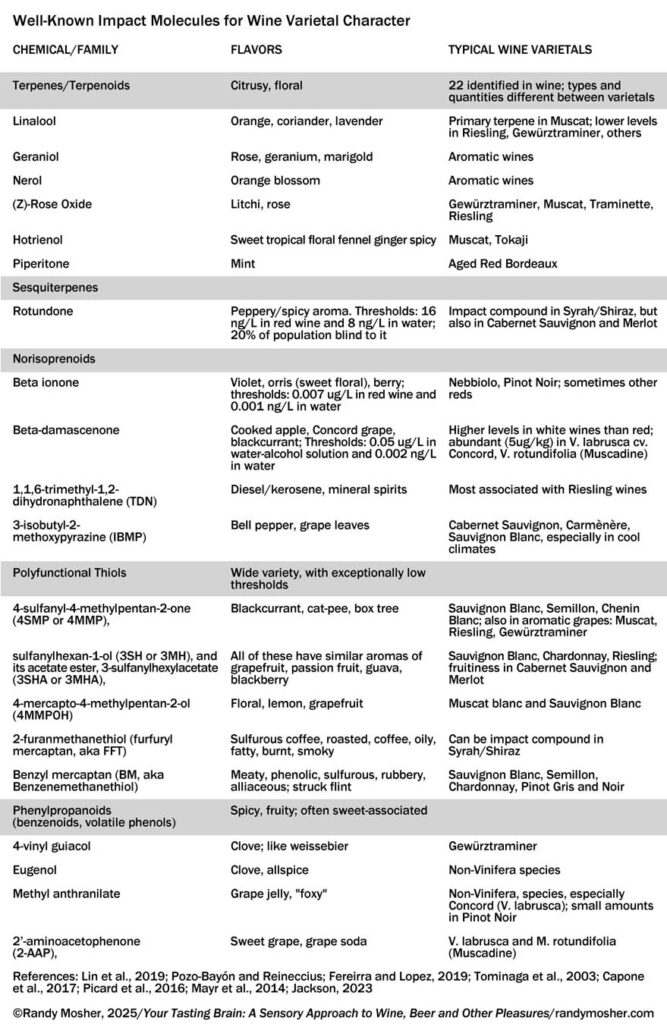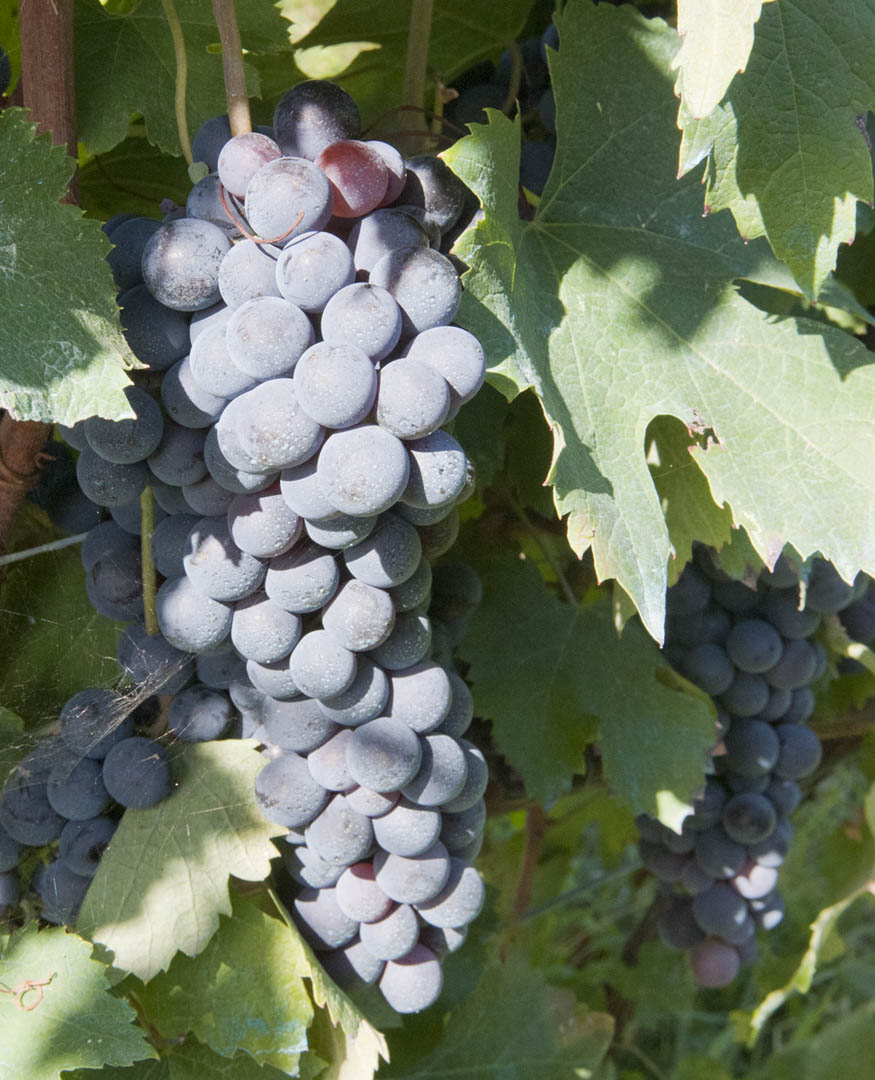In writing about wine for a chapter on fermented beverages, I tried to stick to the big questions and not get tangled up in the weeds of terroir and grape varietals. As important as those are, there’s not much to say in general about them, and besides, many voluminous books have been written on all that. Instead, I tried to find out how fruity aromas originate, why a red wine smells so different from a white one and what on earth is meant by “minerally?” The answers surprised me, and I think they will for most people.
Chemically, wine varietal aroma character, or “typicity,” as the experts say, is not really driven by the pools of fruity and vinous esters, but mostly depends on a handful of particular aromatic molecules that may be present or absent depending on grape varietal and sometimes other factors. Since blind identification is the main cornerstone of sommelier training and expertise, it’s helpful to have a cheat sheet known as “the grid,” which lays out what to expect (or not) from specific varietals. This one mainly focuses on aromas.
As I went through the literature, I started a list of these odorous chemicals and how they relate to wine, compiling this table of twenty of them. I’m presenting it here, since there simply wasn’t room for it in the book. If you’re even a moderately enthusiastic wine fan, you may recognize many of these.

Selected full references:
Jerry Lin, “The genetic basis of grape and wine aroma,” Horticulture Research 6, no. 81 (2019), https://doi.org/10.1038/s41438-019-0163-1.
María Ángeles Pozo-Bayón and Gary Reineccius, Chapter 8F: Interactions Between Wine Matrix Macro-Components and Aroma Compounds, in Wine Chemistry and Biochemistry, ed. M.V. Moreno-Arribas, M.C. Polo (Springer Science+Business Media, LLC, 2009), https://doi.org/10.1007/978-0-387-74118-5 16.
Takatoshi Tominaga, et al., “Contribution of Benzenemethanethiol to Smoky Aroma of Certain Vitis vinifera L. Wines,” Journal of Agricultural and Food Chemistry 51 No. 5 (2003):1373-6, https://doi.org/10.1021/jf020756c.
Dimitra L. Capone et al., “Simple Quantitative Determination of Potent Thiols at Ultratrace Levels in Wine by Derivatization and High-Performance Liquid Chromatography−Tandem Mass Spectrometry (HPLC-MS/MS) Analysis, “The Australian Wine Research Institute (AWRI); Final Report to Australian Grape and Wine Uthority AWRI 3.1.1, 22 September (2017), https://doi.org/10.1021/ac503883s.
Magali Picard et al., “Identification of Piperitone as an Aroma Compound Contributing to the Positive Mint Nuances Perceived in Aged Red Bordeaux Wines,” Journal of Agricultural and Food Chemistry 64 No. 2, (2016): 451–460, https://doi.org/10.1021/acs.jafc.5b04869
Christine M. Mayr et al., “Characterization of the Key Aroma Compounds in Shiraz Wine by Quantitation, Aroma Reconstitution, and Omission Studies,” Journal of Agricultural Food Chemistry, 62 No. 20 (2014): 4528–4536, https://doi.org/10.1021/jf405731v.
Ronald S. Jackson, “Wine Tasting: A Professional Handbook,” (Academic Press; An Imprint of Elsevier, 2023), ISBN: 978-0-323-85263-0.

